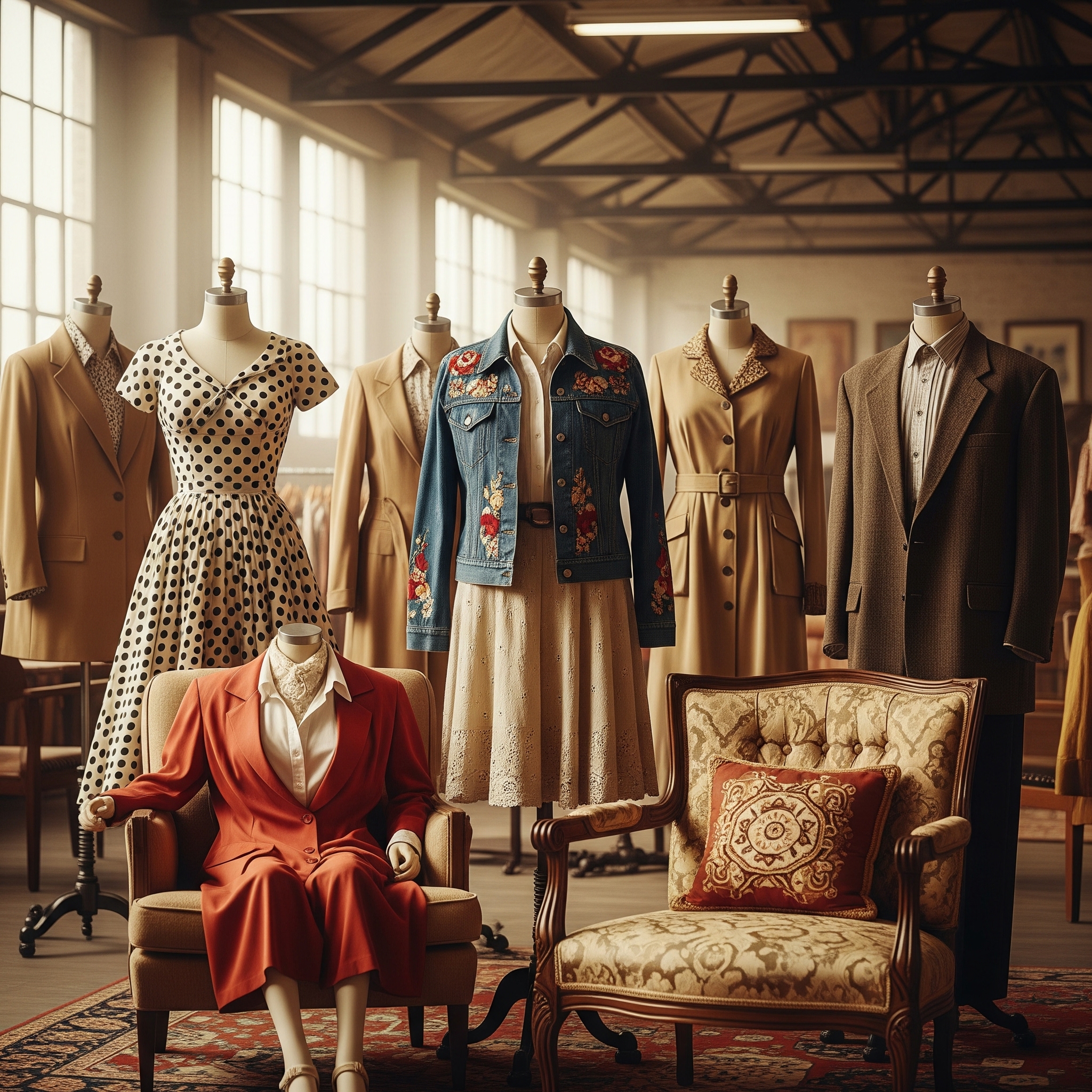Blog
The Enduring Appeal of Vintage Fashion: Sustainability, Style, and Story

In an era of fleeting trends and mass-produced clothing, vintage fashion stands as a captivating counterpoint, offering a unique blend of sustainability, distinctive style, and tangible history. More than just pre-owned garments, vintage pieces carry echoes of the past, whispering stories of previous lives and embodying a timeless elegance that often surpasses the disposable nature of contemporary fast fashion. The resurgence of vintage is not merely a nostalgic trend; it reflects a growing consciousness about environmental impact and a desire for individuality in a homogenized world.
The sustainability aspect of vintage fashion is a significant driver of its current popularity. By choosing to purchase pre-loved clothing, consumers actively participate in the circular economy, diverting textiles from landfills and reducing the demand for new production, which is often resource-intensive and environmentally damaging. Each vintage garment saved and repurposed is a small act of rebellion against the linear “take-make-dispose” model of the fashion industry. Embracing vintage is a tangible way to reduce your carbon footprint and contribute to a more sustainable approach to consumption. Furthermore, the inherent quality and durability of many vintage pieces, often crafted with higher standards than today’s mass-market items, mean they are likely to last longer, further reducing the need for frequent replacements.
Beyond its eco-friendly credentials, vintage fashion offers an unparalleled avenue for personal style and individuality. In a world where trends are often dictated by algorithms and social media echo chambers, vintage pieces provide an opportunity to cultivate a truly unique and distinctive look. Each garment tells a story, reflecting the styles and aesthetics of a bygone era. Whether it’s a 1920s flapper dress, a 1950s cocktail gown, a 1970s bohemian blouse, or a 1980s power suit, incorporating vintage into your wardrobe allows you to express a sense of personal history and set yourself apart from the crowd. It’s about curating a collection that reflects your personality and appreciation for design across different decades. The thrill of the hunt, discovering a hidden gem in a vintage store or a thrift shop, adds another layer of enjoyment to the process.
The story and history embedded in vintage garments are a significant part of their appeal. Owning a vintage piece connects you to the past in a tangible way. You might wonder about the person who wore it before you, the occasions it graced, and the cultural context in which it was originally created. These clothes carry the patina of time, subtle imperfections that add to their character and authenticity. This sense of history and narrative adds a depth and richness to your wardrobe that new, mass-produced items simply cannot replicate. Vintage pieces can become cherished heirlooms, passed down through generations, carrying their stories forward.
Navigating the world of vintage fashion requires a different approach than shopping for contemporary clothes. Patience and a keen eye are essential. Vintage sizes often differ from modern sizing, and garments may have minor flaws or require some restoration. However, these challenges are often part of the charm. Learning about different eras of fashion, understanding fabric quality, and knowing how to care for vintage items are all part of the rewarding experience. Many vintage enthusiasts develop a deep knowledge of fashion history and the skills to mend and preserve their treasured finds.
The rise of online platforms and dedicated vintage stores has made it easier than ever to access a wide range of vintage clothing. From curated high-end boutiques to online marketplaces connecting individual sellers, the options are vast and varied. This accessibility has further fueled the popularity of vintage, making it a viable and appealing choice for a growing number of consumers.
Incorporating vintage into a modern wardrobe doesn’t mean dressing in head-to-toe period attire. The most stylish approach often involves mixing vintage pieces with contemporary items, creating a unique and eclectic look that blends the best of both worlds. A vintage silk scarf can add a touch of elegance to a modern blazer, a vintage denim jacket can bring character to a contemporary outfit, or a vintage handbag can become a statement accessory. The key is to curate a personal style that feels authentic and reflects your individual taste.
In conclusion, the enduring appeal of vintage fashion lies in its multifaceted benefits. It offers a sustainable alternative to fast fashion, allows for the cultivation of a distinctive personal style, and connects us to the rich history of fashion and the stories of the past. As we become increasingly aware of the environmental and social costs of our consumption habits, vintage fashion offers a stylish and meaningful way to embrace a more conscious and individualistic approach to dressing. It’s a reminder that true style is timeless and that the most cherished pieces in our wardrobes often have a story to tell.
